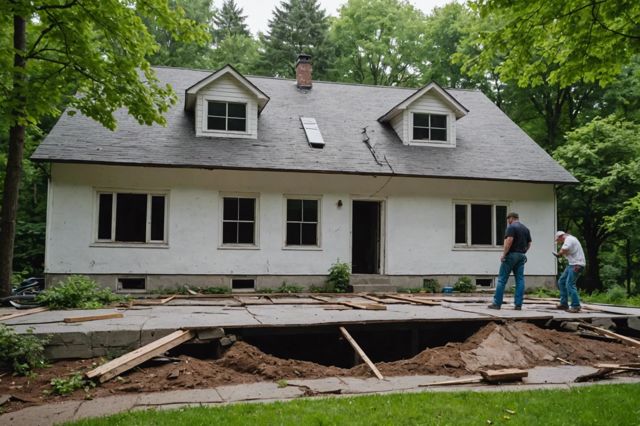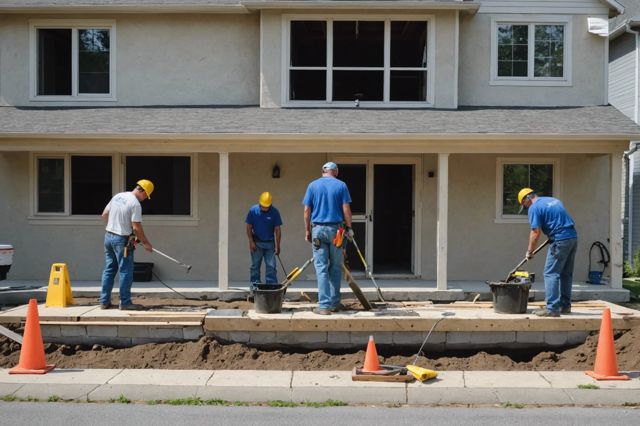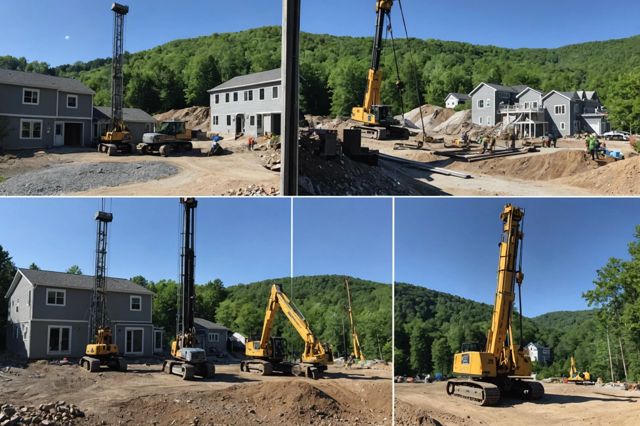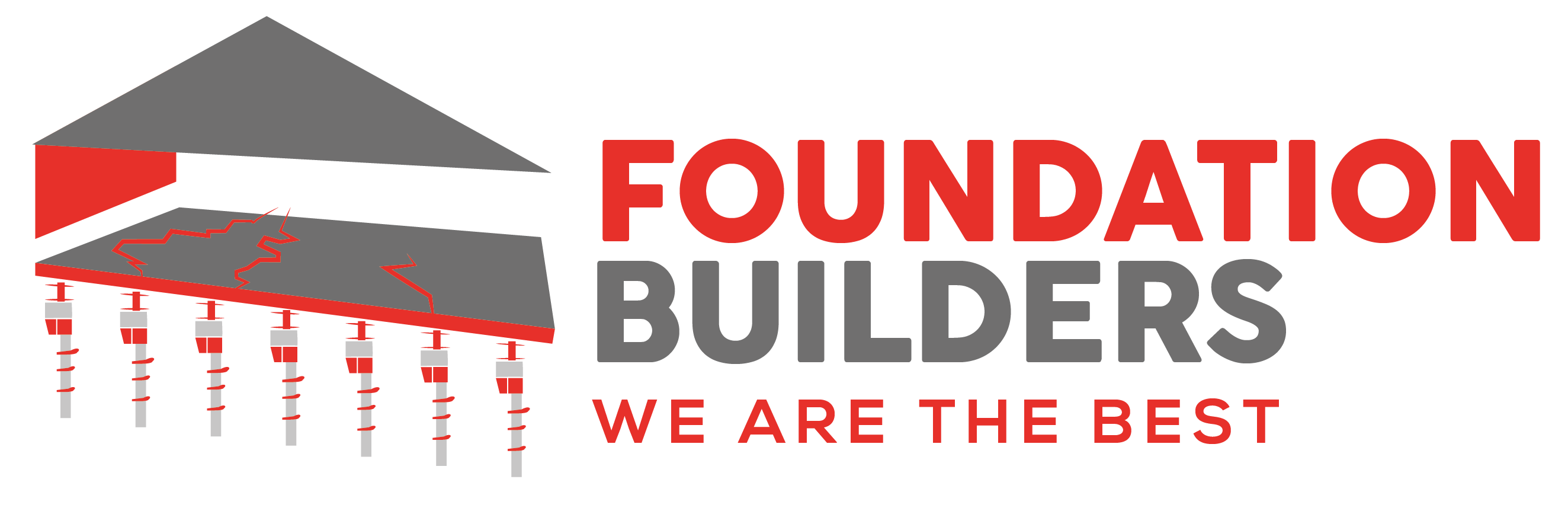Foundation repair can affect building insurance, often leading to increased premiums and potential coverage limitations depending on the cause of damage. Homeowners should consult their policy details and work with professional teams that understand insurance compliance for effective repair strategies.
1. Understanding Foundation Repair and Building Insurance
Explore how foundation repairs can impact your building insurance policies, including changes in premiums and coverage limitations.
- Homeowners insurance generally covers sudden and accidental foundation damage caused by specific events like tornadoes, fires, or fallen trees.
- Commonly, damage from wear and tear, poor construction, or natural events such as earthquakes and floods is not covered.
- Review your insurance policy documents carefully to understand what is covered and prepare to explain any damage when filing a claim.
Warning Signs of Foundation Issues:
- Uneven floors and leaning walls.
- Doors and windows that stick or won’t close properly.
- Visible cracks in doors, windows, exterior, or basement walls.
- Moisture in basements or garages.
Prevention Tips:
- Manage water flow around the property to prevent buildup.
- Clean gutters and downspouts regularly.
- Avoid planting trees close to the home.
- Schedule regular foundation inspections with professionals who offer free inspection services.
Insurance Policy Tips:
- The HO-3 policy, a common type of home insurance, covers most perils unless explicitly excluded.
- Foundation damage repair costs are typically covered up to the dwelling coverage limits, usually between $100,000 and $500,000.
- Immediate action is advised if a covered foundation issue occurs; contact your insurance to arrange an inspection by a claims adjuster.

2. The Impact of Foundation Issues on Property Value
- Foundation problems can lower a home’s resale value by 10-15%. This decrease is often due to the costs of fixing the damage, which can make the home less appealing to potential buyers.
- Repair expenses vary widely, ranging from $500 for minor issues to more than $10,000 for severe problems. On average, homeowners spend about $2,166 to $7,802.
- Visible damage like cracks can turn away prospective buyers, impacting the curb appeal of the property. Unresolved foundation issues might also lead to secondary problems such as sagging floors and cracked windows.
- It’s wise to address foundation issues early to prevent further reduction in property value. Regular inspections and timely repairs by trusted professionals are recommended.
- When selling a home, disclosing any foundation issues is critical. Failure to do so can lead to legal actions. Appraisers assess these damages and their effects on property value, noting the need for a professional evaluation if serious problems are detected.
- The impact on a home’s appraised, detailing the various types of foundation damage and their common signs, visit Common Signs of Foundation Damage.
- Potential homeowners should be aware of the risks of buying a house with foundation problems. Even minor issues can escalate into major concerns like mold or pest infestations.
- Before purchasing, it’s advisable to have a structural engineer assess any disclosed foundation issues. This evaluation can provide leverage in price negotiations or in having the seller address the repairs.
- Lenders may be hesitant to approve mortgages for homes with significant foundation issues, as these can affect the overall value and safety of the property.
- If problems are discovered after purchase, the buyer might have legal options against the seller or inspector, depending on the agreements made during the sale.
3. Choosing the Right Team for Foundation Repair
Choosing the right construction team for foundation repair is critical. Here’s why:
- Insurance Compliance: Home insurance may cover foundation repairs if the damage is due to specific events like water damage from a burst pipe. It’s vital to have a team that understands what insurance policies typically cover and what additional riders might be necessary.
- Quality Workmanship: Experienced teams deliver high-quality repairs that address issues like water buildup, natural disasters, or faulty construction. This can prevent future damages that aren’t covered by insurance, such as those caused by gradual leaks or wear and tear.
- Understanding Coverage Limits: Many policies do not cover damages from settling, shifting, or earth movements. A knowledgeable team can help navigate these limitations, ensuring that repairs are done within the scope of what your insurance will allow.
- Preventive Measures: Expert teams can also advise on preventive measures to avoid future issues not covered by insurance, like damage from prolonged drought or tree roots.
- Documentation for Claims: If you need to file a claim, detailed documentation from a professional team is crucial. They can provide a full explanation of the damage and the necessary repairs, which is often required by insurance companies.
Selecting a qualified team not only ensures compliance with insurance requirements but also secures the integrity of your building’s foundation.
For more professional advice and available repair options, including the use of Helical Piers, you can explore further details.

4. Case Studies: Successful Foundation Repairs and Insurance Outcomes
- In Toquerville, Utah, a home faced settling issues on its north side. Landmark Testing and Engineering identified the problem and recommended underpinning with an adapted approach due to rocky soil. Ram Jack Utah installed 16 driven steel piles using a rotary hammer drill for pilot holes. The house was lifted 2.5 inches back to level, and structural polyurethane foam was added for stability, showcasing the effectiveness of tailored solutions.
- The East End on the Bayou Townhomes in Houston, Texas, encountered unpredictable soil conditions. Ram Jack Texas proposed using helical piles that could bear loads immediately, reducing construction time. Over 700 helical piles were installed in just three days for three buildings, allowing for rapid progress on the project. Perry Homes appreciated the efficiency and the extended warranty on the work.
- A two-story home experienced significant foundation failure with previous repair attempts proving unsuccessful. The chosen repair strategy included 21 push piers and 500 pounds of polyurethane to fill voids. Despite challenges like a sloping site and additional weight from earlier repairs, the team successfully stabilized and leveled the house. This case highlights the importance of professional expertise in complex foundation repairs.
For more details on our services related to foundation repair and stabilization, visit our services page.

FAQ
What does homeowners insurance generally cover in terms of foundation damage?
Homeowners insurance typically covers sudden and accidental damage to the foundation caused by specific events such as tornadoes, fires, or fallen trees. However, damage resulting from wear and tear, poor construction, or natural disasters like earthquakes and floods usually isn’t covered.
What are some common warning signs of foundation issues?
Common warning signs include uneven floors, leaning walls, doors and windows that stick or won’t close properly, visible cracks in the doors, windows, exterior walls, or basements, and the presence of moisture in basements or garages.
How can I prevent foundation damage?
To prevent foundation damage, it’s important to manage water flow around your property to avoid buildup. Regular cleaning of guterals and downspouts, avoiding planting trees close to the house, and scheduling regular foundation inspections with professionals are effective preventive measures.
What should I do if I discover foundation damage?
If you discover foundation damage, immediate action is advised. Contact your insurance company to arrange an inspection by a claims adjuster, especially if the issue might be covered under your insurance policy.
How do foundation problems affect a home’s resale value?
Foundation problems can reduce a home’s resale value by 10-15%, primarily due to the costs associated with fixing the damage. Such issues can also decrease the property’s curb appeal and lead to secondary problems like sagging floors and cracked windows.
What actions should homeowners take when selling a home with foundation issues?
Homeowners should disclose any foundation issues when selling their property. Failure to disclose such problems can lead to legal consequences. It’s advisable to address these issues early on to prevent further devaluation of the property and to conduct regular inspections and repairs.
How do significant foundation issues affect mortgage approvals?
Lenders may be hesitant to approve mortgages for homes with significant foundation issues since these can adversely affect the overall value and safety of the property. Buyers should consider having disclosed foundation issues assessed by a structural engineer before purchasing.
How important is choosing the right team for foundation repair?
Choosing an experienced and knowledgeable construction team for foundation repair is crucial. Such a team can ensure repairs comply with insurance policies, provide quality workmanship, understand coverage limits, recommend preventive measures, and prepare necessary documentation for insurance claims.
How has tailored foundation repair been effective in specific cases?
Case studies, like the one from Toquerville, Utah, demonstrate that tailored foundation repairs can be highly effective. For instance, underpinning and the use of structural polyurethane foam successfully stabilized and corrected foundation issues by adapting solutions to challenging conditions such as rocky soil.

